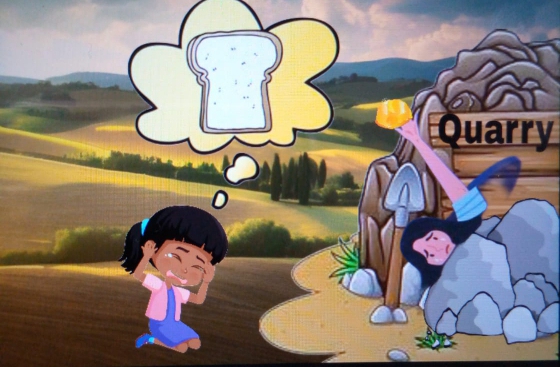
Illustration by Leon
By Treezer Michelle Atieno
In the blistering sun and the deafening sound from the mining machines, several women continue with their gold extraction activities unmoved. While some crush the ores with hammers, others transport the smaller ores for drying with sacks on their backs.
The hard labor witnessed here is worrying but not as much as the use of mercury with bare hands and exposed faces while extracting gold. An impending danger waits for these female artisanal miners in Rosterman mines of Kakamega County.
Rosterman mine is an abandoned gold mine located in Kakamega County of Western Kenya. The mine was started in 1935 and was abandoned without rehabilitation in 1952. It has deep open excavations and huge number of tailings.
Locals, mostly women pan the tailings for gold remains. Water that has ponded in some of the abandoned mining pits is also used for domestic chores and for animals. The residents are obviously unaware of the impacts of the leached elements or maybe, they know too little.
Ponded water at Rosterman mines. The residents use the water for domestic chores and for animals.
“Most of us know that mercury is harmful,” shouts Gladys Adisa, a 36-year-old resident of Rosterman as she spreads the ores in a wide nylon carpet to dry. “All we are told is that it is poisonous and should not get to the bloodstream. This is the work we live by. Why is no one giving us an alternative? ”She adds after moving 80 meters away from the mining site.
Gladys Adisa after spreading the crushed Ores to dry at Rosterman mines.
Though artisanal gold mining is considered a male dominated industry, women are a key part of this sector. According to Association of Women in Energy and Extractives in Kenya (AWEIK), about 40 % of the total small scale artisanal miners in Kakamega County are women.
In Kakamega’s Ikolomani and Rosterman mining sites, women take on different informal, part time or seasonal and low paying roles in the gold value chain. They take part in ore processing, sorting, sluicing, washing, panning, sieving, mercury-gold amalgamation, crashing amalgamation decomposition and dealers.
This means that their participation in the most value bearing activities is low. Also, because of the nature of their work at the mines, Florence Achieng from Ikolomani confirms that they come into contact with mercury almost on a daily basis.
“I have worked here for 11 years now. My strength and general weight has reduced by the years. Most of the time my eyes also become very itchy.” says Florence as she continues with the panning while sitting close to her home which is adjacent to Ikolomani mines.
Florence Achieng with her panning tools at Ikolomani mines which is adjacent to her home.
Centre for Disease Control and Prevention (CDC) outlines some health effects of exposure to mercury including irritation in the eyes, skin, and stomach, persistent cough, chest pain, difficulty in breathing, insomnia (lack of sleep), headache, weakness or exhaustion and weight loss.
The World Health Organization (WHO) considers mercury as one of the top ten chemicals or groups of chemicals of major public health concern. According to WHO, chronic exposure to mercury (continuous long term contact) is a threat to the development of the child in the utero of women in their productive age.
The Kenya Mining Act, 2016 prohibits mercury usage in all mining operations that require mining permits including artisanal small scale gold mining operations. The Act also obliges actors involved in mining activities to environmental compliance with the provisions of the country’s environmental legislation.
“Mercury attracts fewer gold. We have been advised to use other methods that attract more gold and are less harmful to human health and environmental. However, we are unable to access finance to invest in essential equipment in order to upscale our activities.” Concludes Justus Shiundu, the Rosterman site chairperson.
Despite artisanal gold mining engaging a considerable number of rural mining populations, it remains low in its productivity. Its economic contribution to Kenya’s economy remains unclear. AWEIK records that during peak mining periods, artisanal gold mining activities in Kakamega County produce about 2kg of gold in a week.


